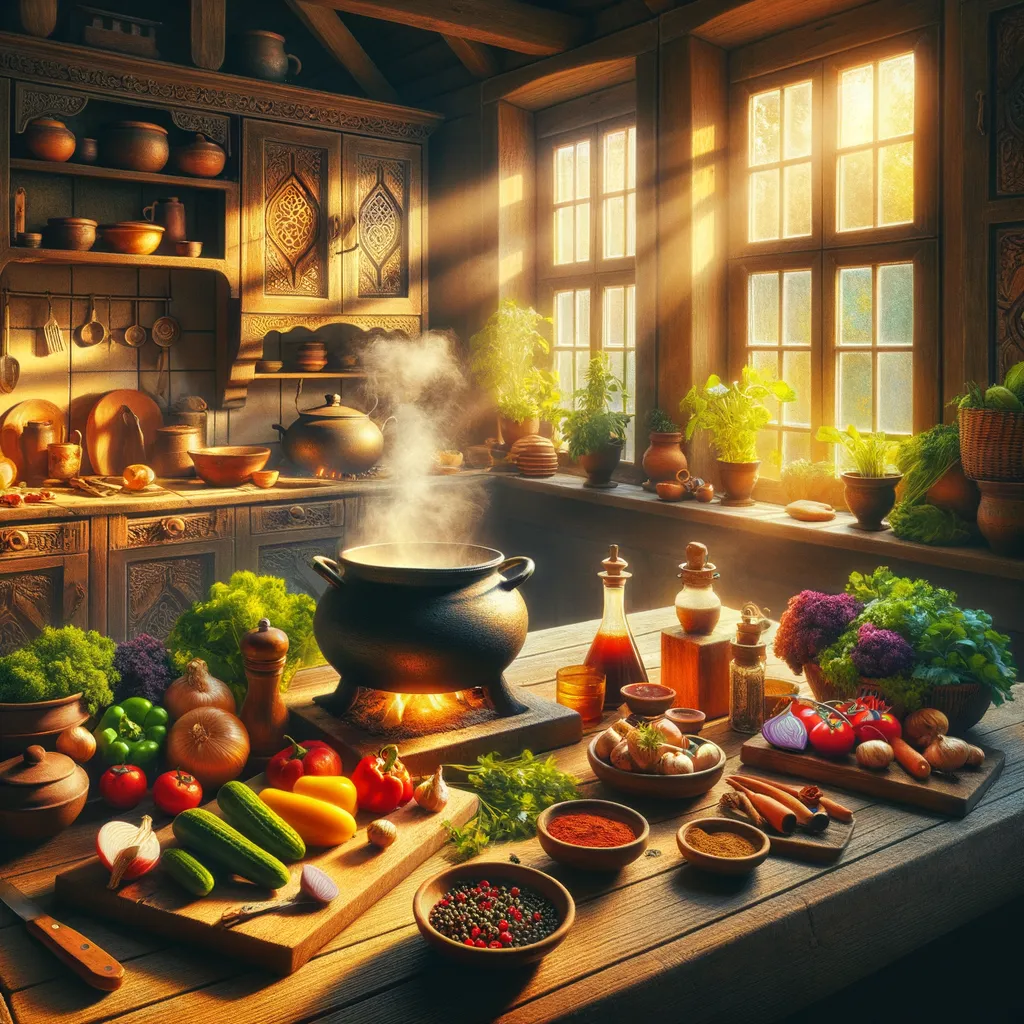Discovering Family Ties: The Hidden Magic of Tradition
In a kitchen alive with the fragrant dance of spices and simmering broth, a profound transformation unfolds. Once seen as a burdensome obligation, the Sunday family dinners reveal themselves as a vibrant tapestry of memory, culture, and connection. As the act of cooking becomes a form of storytelling, each ingredient resonates with the rich legacy of generations past, turning the chaos of preparation into a sanctuary of shared lives and laughter. With every bite savored at the table, an unexpected appreciation blossoms, illuminating the significance of tradition and the way it weaves the fabric of identity. In this moment of clarity, the realization dawns that even the most seemingly mundane rituals can harbor the essence of belonging and the promise of continuity through time.
In the memory of August 31, 2019, I found myself standing in the kitchen, the air thick with the aroma of spices and simmering broth. The clattering of pots and the rhythmic chopping of vegetables formed a symphony that resonated with the heart of my family’s traditions. As a child, I often rolled my eyes at the elaborate rituals surrounding our Sunday family dinners. The preparation felt endless, and the insistence on everyone gathering around the table seemed like an imposition rather than an invitation. Yet, as I stood there, watching my mother stir the pot with the same care she had every week, I began to uncover the hidden layers of this familiar annoyance.
The kitchen was a kaleidoscope of colors: vibrant red tomatoes, deep green herbs, and the golden glow of simmering broth. My siblings flitted in and out, each contributing their own touch to the chaos. I remembered how, in my teenage years, I had wished to escape this weekly obligation, yearning instead for the freedom to explore the world beyond our home. The laughter and chatter that filled the room had often felt more like a cacophony than a celebration. But as the years passed, the significance of these moments began to unfurl like the petals of a flower, revealing a beauty I had been too young to appreciate.
As I stirred the pot, I noticed the stories that were woven into the very fabric of our gatherings. Each ingredient was more than just a flavor; it represented a memory, a culture, and a connection to those who had come before us. My grandmother had taught my mother these recipes, passed down through generations like a cherished heirloom. The act of cooking had always been a form of storytelling, a way of keeping our lineage alive. With every bite, we tasted not just food but also the essence of our family history, rich and complex.
The kitchen, once a battleground of clashing wills and youthful rebellion, transformed into a sanctuary of connection. I watched my family members share their lives, triumphs, and struggles, each story a thread in the tapestry of our shared existence. The clinking of forks and the laughter that erupted at shared memories became a backdrop to the lessons we learned from one another. I realized then that these Sunday dinners were not merely about the food; they were about nurturing relationships, building empathy, and fostering a sense of belonging.
As the meal was served, I marveled at the sight before me. Plates adorned with vibrant dishes, a feast not just for the stomach but for the soul. The table, once a place of forced interactions, had become a stage for the unfolding of our collective narrative. In the warmth of that gathering, I understood the power of tradition. It was a vessel that transported us back in time, allowing us to honor our roots while simultaneously embracing the present.
That evening, as we gathered around the table, I felt an unexpected surge of gratitude. The annoyance that had once clouded my perception melted away, replaced by a profound appreciation for the customs that shaped our family identity. Each bite was a celebration of resilience, love, and continuity, an acknowledgment that we were all part of something larger than ourselves.
In the midst of laughter and shared stories, I caught a glimpse of the future. I envisioned my own children, years down the line, perhaps rolling their eyes at the same rituals I had once dismissed. Yet, I hoped they would one day stand in their own kitchens, reflecting on those moments with a newfound understanding, just as I was doing now. The cycle of appreciation would continue, each generation discovering the beauty hidden in the mundane.
That night, as the stars twinkled outside, I was struck by a realization: traditions, no matter how cumbersome they may seem, have a way of grounding us. They remind us of who we are and where we come from, anchoring us in a world that often feels chaotic. The simple act of gathering around a table, sharing food, and weaving stories together became a powerful antidote to life’s complexities.
As I cleaned up after the meal, the laughter still echoing in my ears, I pondered the transformative power of customs. What once felt like an obligation had blossomed into a cherished ritual, a cornerstone of my identity. It was a reminder that sometimes, the things that annoy us most can evolve into the very fabric of our lives, stitching together the past, present, and future in unexpected ways.
In the end, I was left with a lingering question: how many other customs in our lives, once met with annoyance, might hold the key to deeper understanding and connection if only we dared to look closer?
In the gentle embrace of tradition, the ordinary transforms into a tapestry of connection, revealing the profound beauty hidden within the rhythms of family life.



